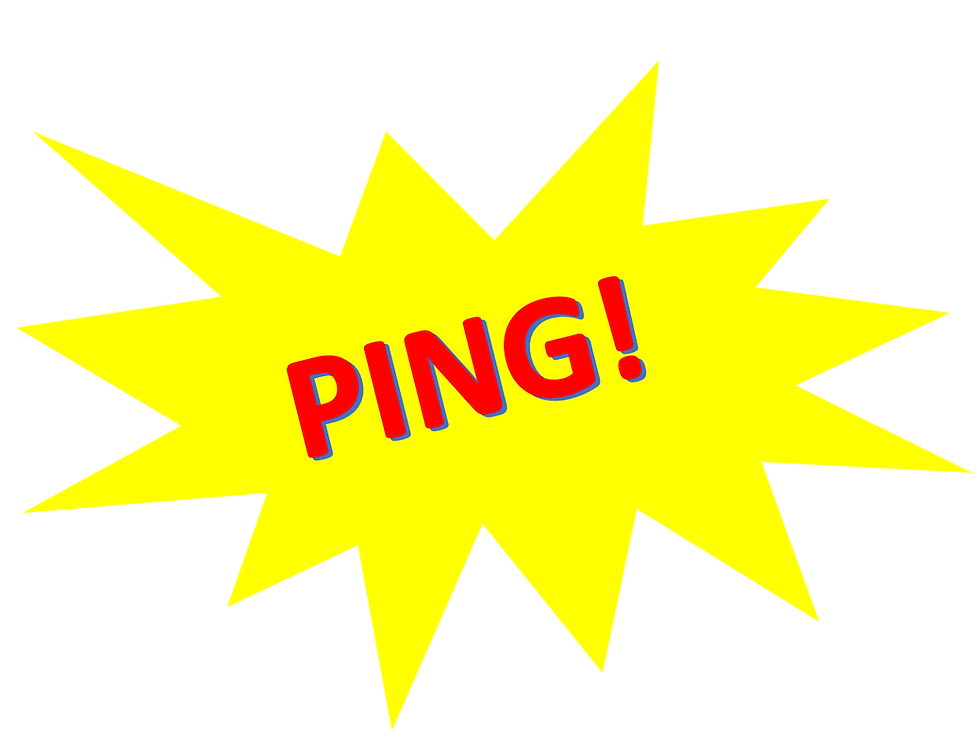Notifications 1: Turn them off!!
- Dr Jeremy Hinks
- Nov 13, 2020
- 5 min read
If you want to do something good for your wellbeing do the following. Turn off your notifications! They really aren’t doing you any good at all. Having turned them off notice how you feel. You might feel liberated, you might feel ill-at-ease. Be interested in what your response is. It might be quite revealing!
I am a big fan of what can be achieved through online coaching, and have been since well before COVID-19 moved the majority of coaching from the face to face format to online in the space of a day or two! It is possible to establish an effective coaching partnership through virtual connection, no question. Perhaps it has a different feel compared to what can be achieve face to face, but no less effective. Oh, and by the way, this view is as much my coachees as my own!
Throughout 2020 I have found myself talking to clients working at home where they try to balance the challenge of health, family, home schooling and work! It was noticeable that many coaching conversations needed to be able to accommodate and adapt to unexpected interruptions. They came in a rich variety of shape and form! Children appearing on screen seeking attention, permission, or bear gifts. A dog or cat wandering across a keyboard. Young babies out of my eyeline but definitely present in the ‘coaching space’. The ring of a doorbell announcing a parcel delivery and many more.
What was curious was how these interruptions often had the impact of enriching the conversation. They seemed to underscore the ‘whole of life’ element of coaching in a positive way. Perhaps the interruptions offered a short respite in the coachee’s thinking to which they returned with a slightly changed perspective or a renewed vigour. They most certainly reinforced the sense of the very human connection that is fundamental to effective coaching. In doing so they enhanced the sense of talking together in some sort of shared virtual space, rather than via our respective screens.
What has been less positive is definite increase in the presence of notifications from people’s various devices in the coaching space. I am prepared to swear that this has become a bigger issue as home working has bedded in for so many of us. To be honest I am prepared to swear at it too! Never mind how careful I am to contract with my coachees that our sessions need to be in a space free of interruptions these pesky notifications still raise their voice. Ping ding ring belch bark sigh meow hoot toot cock-a-doodle-do whoosh scream shriek squawk chirp cluck tinkle clatter trill have all muscled into my consciousness. While the noise of choice may be in irritation of far more concern is the visible impact on my coachees.
Picture the screen!

A coaching conversation is underway and myself and my coachee are conversing in this virtual space, to a great extent unaware of two-dimensional screen connection we are actually working ‘through’. The coachee will be a model of concentration and connection as modelled above.
And then…..

While the visible impact varies from person to person it is always there to be seen.

Typically, there is a change in expression that ranges from resignation to anger, frustration to even despair. Eye contact is broken as the coachee seeks the origin of the notification. Some are able to ‘let it go’ fairly quickly while others have a clear need to track down what is behind the notification.
Throughout this there is a sense for me that I am now contained within the coachee’s device vying for their attention, battling against a flow of data heralded by the various notification noises. It’s quite unsettling! As a coach in these situations I can enquire of the coachee about the value of these notifications to their coaching experience. Most appear appreciative of the challenge, realising there isn’t any value and our conversation now carries on, uninterrupted. Perhaps the outcomes are unaltered yet I have the feeling that this sort of disconnect casts a shadow my coachees thinking, breaking connections that were forming, sending thoughts and feelings that might have been surfacing back into the depths of the subconscious!
What is even more worrying for me is the impact on these notifications on the day-to-day wellbeing of individuals, and on their ability to be effective at work, at home. There is that well-known phrase that ‘a wealth of information leads to a poverty of attention’. Your notifications are the promise of more information. Our reactions to them imply this new information might be more important (perhaps more of a potential threat) than the flow of thinking or doing that they interrupt. It’s true that they provide a service of advising us that something else needs our attention. Unfortunately for the majority of us they take on role more akin to master rather than servant. They become the tail that wags the dog. A ‘ping’ sends us off on the trail of more ‘information wealth’ taking with us the belief that we multi-task effectively. Unfortunately, that is simply not true and all we are left with is ‘attention poverty’.
It’s amazing isn’t it that a notification can morph from an advisory of something useful into information that must be checked as ‘it might be more important than what I am currently doing’. They become a portent of a potential emergency that justifies our immediate attention. Really?! I am not aware of any life and death system where an emergency is notified to an everyday professional email account!
These notifications trigger a response within us that is part of our constant scanning for threat. Our eons old instinct for survival is based on our ability to combine our cognitive and emotional capabilities to identify and deal with threat. What notifications represent may not be a physical threat yet they are most certainly a social one. Not knowing what a notification signifies is in itself an uncomfortable level of uncertainty which can impact on ability to concentrate.
Actually, a device does not even need to make a noise to be a distraction. A 2014 study demonstrated that ‘the mere presence of a mobile phone (within arm’s reach) led to a 20% reduction in attention, concentration and performance in tasks that were demanding and complex’. The phone doesn’t even need to be on. It might even be someone else’s phone for goodness sake!
Here is a simple call to action to improve your wellbeing.
Take the decision to turn your notifications off. Instead, allocate time to checking up on your various channels, and keep to the time that you allocate.
If you lead a team who are working remotely don’t fall into the trap of checking up on them by measuring the quality of what they do in relation to how quickly they respond to your various communications. This is no way create a relationship built on trust and respect.
Seek to change the culture if you have mistakenly created an environment in which there is an expectation that all of your messages must be responded to as if they are an emergency. If this environment exists you’re team might be doing your work, but they will not be doing their own.
Set an expectation for what an emergency is, how it will be communicated, and the expectations in relation to how people must respond. Then be consistent with these expectations in terms of how you raise an emergency and support your team to meet the response expectations too.
Go ahead, make these changes. I can guarantee you will notice a difference. That’s not the same as saying you are going to find it easy. I certainly don’t and that will be the subject of a future blog, Notifications 2, where I am going to be honest about just how difficult I find it is to take some of the medicine that I have outlined above!

Comments